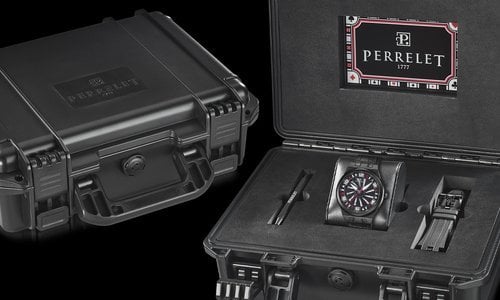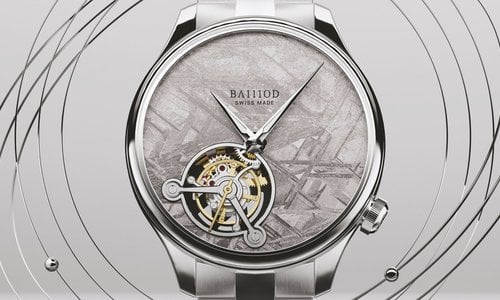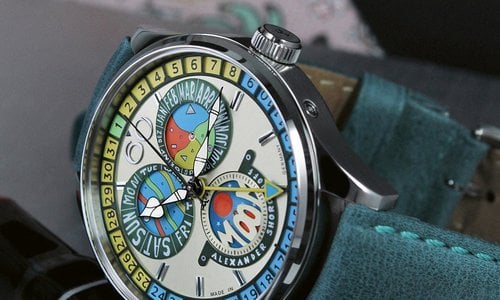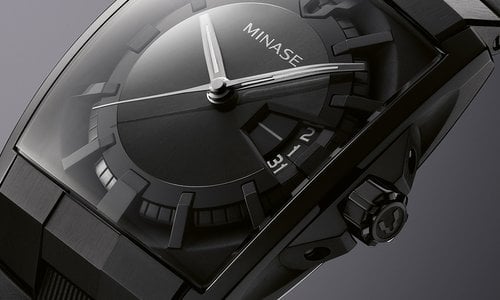Radical changes and unprecedented innovations, new horizons in the art of timekeeping… Moving into the future sometimes begins by a giant leap into the past. In this case, we need to go back to 1747 when d’Alembert published his Recherches sur les cordes vibrantes (Research on Vibrating Strings). It was Guy Semon, Head of Research and Development at TAG Heuer, who went back to these theories. Historically, d’Alembert’s equation was the first wave equation to describe the variation in space and time of an undulating quantity, of a theoretically perfect “vibrating string”.
Finding no practical application for many years, the equation finally began to be used in civil engineering, where it was the basis for the creation of “vibrating string extensometer” gauges, which could measure deformations in concrete due to constraint variations of large buildings, towers, dams, and nuclear power plants. The equation is also used to calculate movements that can affect the cables of a bridge, the catenaries of a train, or… the strings of a guitar.
No one, however, had thought to introduce the notion of a vibrating string—or vibrating beam—into the regulated universe of mechanical watchmaking. No one, that is, until Guy Semon came along. He embraced the idea, not only because of his vast experience in physics and mathematics, but also because TAG Heuer, in its race for high hertz, found itself suddenly confronted—above 500 Hz—with the insurmountable physical limits of the traditional balance spring (the one invented and developed in 1675 by the famous Christiaan Huygens, the father of modern mechanical timekeeping).
From 1/100th to 1/2000th
We will not detail here all of the many steps in the long history of Heuer, then TAG Heuer, in its research for precisely measuring short time intervals. Briefly, however, it is a story that began in 1916 with the Mikrograph, which measured 1/100th of a second. That early beginning continued into the 21st century with the introduction, in 2005, of the TAG Heuer Calibre 360, the first modular mechanical wrist chronograph capable of measuring and displaying 1/100th of a second, reaching 360,000 vibrations per hour.
Then, in January 2011, came the Heuer Carrera Mikrograph integrated chronograph, also displaying 1/100th of a second thanks to two separate assortments, one oscillating at 28,800 and the other at 360,000 vibrations per hour, or 50 Hz. Hardly three months later, at Baselworld 2011, TAG Heuer amazed even more with the presentation of its Mikrotimer Flying 1000 that multiplied the frequency by a factor of ten, to 500 Hz, or the astronomical figure of 3.6 million vibrations per hour, allowing the chronograph to calculate and display a thousandth of a second.
To achieve this spectacular result, TAG Heuer continued down the path of the double escapement. The brand developed the first escapement without a balance, because, at the rate of 3.6 million vibrations per hour, not only does the seconds hand make ten complete revolutions per second, but at these high frequencies, “the spring must be so taut [in this case, it has only four turns, and is approximately ten times more taut than a normal spring] that the balance is no longer necessary for the return,” as Guy Semon explained at the time.
The first breach in the Huygens dam!
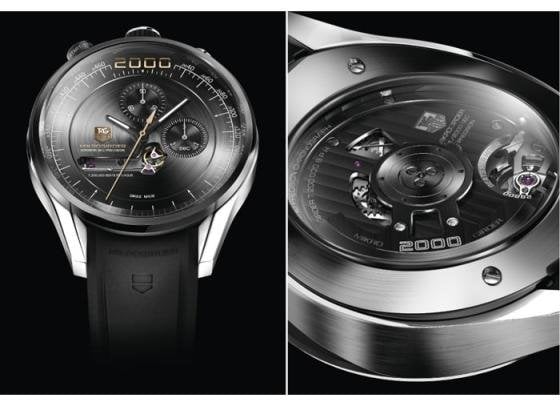
Going beyond Huygens
What happens above a frequency of 500 Hz? “The miracle of Huygens’ invention", according to Semon, “is that the spring regulator is very tolerant when it comes to variations in the frequency of the order of a few hertz that are produced at the moment of impulsion, between 230 and 320 Hz. At higher frequencies, however, things change considerably. The pallets begin to have difficulty following the cadence. Since they cannot rotate over the long term at constant speed, they cannot meet the rhythm required by the regulator. The result is a dynamic and energetic imbalance because the limits of the system have been reached.”
Vibrating beams
It is here, then, where the principle of “strings” or “vibrating beams” comes into play. The thought process began with the theoretical notion of the “perfect vibrating beam,” or a wave with infinite flexibility with constant tension that is transmitted uniformly along its entire length, with ideal elasticity, and insensitive to the effects of gravity. It is a wave that vibrates isochronously. So much for the theory!
In practice, however, it was first of all necessary to get as close as possible to the perfect wave described by d’Alembert’s equation. In broad strokes, the principle seemed simple enough: it combined three “vibrating beams” —an exciter beam attached to the pallets and an oscillator comprised of a thin “beam”, united by a “coupler” that is also a “beam”. By exciting the oscillator so that it approaches as close as possible the “perfect wave” of the theory, it begins to vibrate at perfectly defined frequencies. It can be adjusted using an eccentric, which lengthens or shortens the vibrating beam, a little like tuning a guitar. This new type of oscillator, this “non-Huygens” type oscillator is thus linear, like a string.
As in every classic movement, however, the mechanical power is transmitted in a non-constant manner to the pinion of the escapement. In order to compensate, as far as possible, for this lack of constancy in the energy transmission, the angle of the escapement must be the smallest possible. The escape wheel thus has twice as many teeth, 40 instead of 20. Consequently, the traditional function of “rest” acts to limit the speed and prevent any racing out of control. The geometry of the point of contact of the pallets and escape wheel was also revisited in order to complete this compensation.
For the inertia of transmission, a “system of decoupling the pinion linking the escapement and the wheel” was designed in the shape of a spring that is armed when the transmission is under load and that, at the moment of the drop, re-establishes the stored energy so that “the acceleration of the escape wheel reaches its maximum, independently of the transmission”.
The kinetic energy propagates in the exciter, and transforms into potential energy transmitted to the “vibrating beam of the coupler”. The latter transmits an “exciting energy” that reaches the end of the “oscillating beam,” resulting in a displacement according to the vibratory mode, which is that of the desired frequency.
There is very little inertia and practically no amplitude (it vibrates very quickly but the vibrations are very low), thus the system consumes less energy than a regulator composed of a balance spring and balance. Another advantage of these high frequencies is that the power reserve can be much longer. The system is also versatile, and can be adapted to all frequencies, but below 50 Hz it tends to block. While on paper this new type of regulator seems entirely suitable for short time intervals, it is clearly less so for the simple reading of the hours, minutes, and seconds.
Displaying 1/2000th of a second
The TAG Heuer Mikrogirder concept watch thus “oscillates” at the astounding frequency of 7,200,000 vibrations per hour, or 1,000 Hz, allowing it to measure 1/2000th of a second (TAG Heuer prefers to call it 5/10,000th). Thanks to the dual escapement system, the “normal” Huygens chain indicating the time and the non-Huygens “oscillating” chain of the chronograph measuring 1/2000th of a second do not at all interfere with each other.
What about reading these times? The fractional times of 1/100th, 1/1000th, and 1/2000th of a second are indicated by a central hand that makes 20 revolutions per second on a circular scale around the dial. A second scale, located at 12 o’clock, is divided into fractions of three seconds while a third scale, at 3 o’clock, displays the tenths. Ten patents are pending on this remarkable timekeeper. The future will tell if vibrating beams will replace all the other systems in the race for the most advanced and precise chronometry.
Source: Europa Star April - May 2012 Magazine Issue

